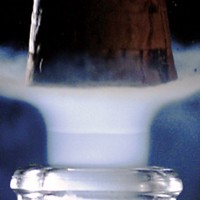Advertisement
Grab your lab coat. Let's get started
Welcome!
Welcome!
Create an account below to get 6 C&EN articles per month, receive newsletters and more - all free.
It seems this is your first time logging in online. Please enter the following information to continue.
As an ACS member you automatically get access to this site. All we need is few more details to create your reading experience.
Not you? Sign in with a different account.
Not you? Sign in with a different account.
ERROR 1
ERROR 1
ERROR 2
ERROR 2
ERROR 2
ERROR 2
ERROR 2
Password and Confirm password must match.
If you have an ACS member number, please enter it here so we can link this account to your membership. (optional)
ERROR 2
ACS values your privacy. By submitting your information, you are gaining access to C&EN and subscribing to our weekly newsletter. We use the information you provide to make your reading experience better, and we will never sell your data to third party members.
Biological Chemistry
Newscripts
Milking Moosic, The Queen’s Purple, Juiced On Xenon
by Stephen K. Ritter
March 17, 2014
| A version of this story appeared in
Volume 92, Issue 11

This just in: Stress-free cows definitely produce more milk. In 2001, a study by psychologists at the University of Leicester, in England, found that piping music into milking barns helps soothe the savage udder by countering the swooshing sounds of automated milking machines and assorted clanking noises. Relaxed cows supposedly release more oxytocin, the neuromodulating hormone that plays a role in amorous behavior and in milk production.
The magazineModern Farmer followed up last month with a story providing testimonials from dairy farmers who verify that calming tunes increase milk production by about 3%. The improvement doesn’t sound like much, but it’s a lot of milk when you have a lot of cows.
The magazine came up with a suggested playlist, which includes “Bridge Over Troubled Water” by Simon and Garfunkel, “Orinoco Flow” by Celtic Woman, and “Concerto for Flute and Harp in D Major” by Moozart.

In case you’ve been looking for an authentic original sample of mauveine dye to admire its lilac color, you can score one by buying a vintage British postage stamp. Mauveine is the distinctive purple phenazinium-based colorant that serendipitously launched the chemical industry some 150 years ago. William H. Perkin accidentally invented mauveine while working on a synthesis of the antimalarial drug quinine, which was critical to British colonial interests at the time.
Newscripts’ informant is João Sérgio Seixas de Melo of the University of Coimbra, in Portugal, whose group has been studying the spectroscopic properties and photostability of mauveine and related dyes over the years. Mauveine is no longer commercially available, Seixas de Melo says. Synthesizing it is a lost art because following the recipes isn’t as easy as making sugar cookies with grandma. In a new study, Seixas de Melo and colleagues determined that Queen Victoria’s royal stamp makers used mauveine to color 6d postage stamps from 1867 to 1880 (Chem. Eur. J. 2014, DOI: 10.1002/chem.201303232). Now you just have to find the stamps.
Despite being one of the inert gases that shuns opportunities to socialize with its fellow elements, xenon is surprisingly bioactive. The noble gas interacts with protein receptors and ion channels, in some cases similarly to nitrous oxide (laughing gas). For example, xenon has been used as an anesthetic for decades, notably in Russia.

According to a Feb. 8 report in The Economist, athletes are now puffing on xenon for its ability to enhance performance by increasing the oxygen-carrying capacity of blood. Xenon is one of several agents thought to activate production of HIF-1α, a protein alarm that triggers other proteins to come to the rescue of cells deprived of oxygen. In particular, the xenonipated protein boosts levels of erythropoietin (EPO), a protein hormone that regulates formation of red blood cells. Synthetic EPO is already infamous as a banned performance-enhancing drug, especially among cyclists and cross-country skiers.
Russian sports authorities have given athletes their blessing to use xenon as a training aid, the same way they might train in low-oxygen conditions at high altitude to improve performance. Although getting juiced on xenon is not specifically banned, it has opened up a new ethical can of worms about what should be allowed. It also raises the question of whether the 87 ppb of xenon in Earth’s atmosphere has naturally been acting in this capacity since time immemorial.
Steve Ritter wrote this week’s column. Please send comments and suggestions to newscripts@acs.org.




Join the conversation
Contact the reporter
Submit a Letter to the Editor for publication
Engage with us on Twitter